|
|
|
Echo Bay is a really special anchorage. We were amazed to have such a place completely to ourselves. We anchored in mirror like water at the base of a mountain, totally protected. During our stay there was lots of activity, but not the annoying kind, it was nature activity. We had river otters, bears, eagles, oyster catchers, many other birds that I can’t identify, to keep us company and entertain us and perfect water that reflected the nearby mountains and sky for the most breathtaking sunsets and sunrises. In the morning the mist would wrap around the shore and float across the water. It was as I said, spectacular. Practically the moment we arrived, Fran and Joe took the first excursion on the kayaks to explore the inner hidden cove which is only accessible at high tide. They soon disappeared around the knoll and were gone for an hour.
When they came back we
were thrilled to hear that they saw and watched up close a black bear.
The Queen Charlotte black bear is only found on Queen Charlotte Islands.
They are smaller than your more familiar black bear and quite peaceful.
As the tide was turning and going out he appeared on the newly exposed
inner shore of the little cove. He was slowly minding his own business
not especially interested in his new found audience and just went about
his daily routine of turning over little boulders looking for what he
might find for dinner underneath, quite unlike what you would imagine a
big powerful bear to eat, just little bugs, worms and green grass.
There is a lot to see in the inner cove. It used to be the sight of an old homestead. The only traces left now of days gone by and their struggles are a few scraggy looking apple trees and a grassy area which the deer and bear alike love to munch on.
LITTLE PRANKSTERS As you kayak throughout the anchorage, you are not alone. You sense that someone is watching you and sure enough they are. It’s the three curious and somewhat prankster-ish river otters who very sneakily follow you around mostly unnoticed unless you are following your fellow kayaker from a distance and then you can see how they follow your partner, popping up in different places behind her or him, coming closer each time to get a better look, not aware that you are observing them from an unnoticeable distance.
When I was kayaking alone on our trip back after Fran and Joe left, I felt a little soft nudge on my bottom (we have soft inflatable kayaks). It wasn’t a rock or rub across the bottom of a too shallow area but a little rub from something moving. I’m sure it was one of the otters. They like to dive and swim under you and pop up with their quiet and barely noticeable puffs of air once they surface each time getting a different view point of you. They sure seem to have a lot of free time to play. When they are not investigating us, they are chasing and playing with each other along the shore. They were comical in their cat and mouse ways of playing and observing and are very shy and swift to escape and hide if they thought you caught a glimpse of them. But their curiosity was too strong to keep them hidden for long because they only too quickly would come back to look again, as their curiosity always got the best of them.
They weren’t the only curious characters in this varied neighborhood or habitat. We had some resident eagles, which had a nest perched high above on a tall tree overlooking the anchorage. They would soar over head and cackle and "chirple" to themselves. Their familiar sounds would echo through the anchorage. Who knows what they were saying about us. We would see them up there watching and talking about us for hours on end. Little water birds that I couldn’t identify would skitter across the water leaving multiple designs that reverberated across the mirror like water. Others, like cormorants would dive and disappear searching for little fish. They would stay under for a long time and poke up smooth and gleeming, slick feathers shimmering from the water, sometimes yards away. Sometimes they would come up with a little fish hanging out the side of their peaks and we’d watch as they juggled them up and down their throats. Many times they came up empty handed as it was skillful and difficult work and required lots of patience and diligence.
When the tide went out, a
whole new group of residents would arrive to feed on the newly exposed
shoreline which became a full free buffet of tasty morsels. Mostly it was
a loud pack of oystercatchers, black birds with big long red beaks
Below the water along the shore was another interesting habitat to observe. You’d see colorful starfish, and big fat lazy looking sun fish that would slowly move across the muddy bottom, eating whomever they happened to find along their path. Their colors would glimmer through the monotonous green water, colors more appropriate for the Caribbean rather than this monotonous green environment. You also could see clam shells, all sizes, empty, piles of them, accumulated from years and years of left over feasts from persons long gone by.
Back at the boat we had a
good view out to the main channel and no one went by. We felt like we
were the only people in this grand landscape of wilderness, like being on
the edge of the earth. The weather was perfect so we decided to BBQ some
freshly caught Queen Charlotte salmon outside on the deck. It was
delicious, fresh salmon that the wharfinger gave us in Sandspit. It was
extra fish caught by one of the local sports fishing guides. That’s how
they stay in good grace with Kathy the wharfinger. You soon learn that a
few extra fish for her winter’s freezer is a good idea. She graciously
shared one with us and we in turn gave her comforters off the boat that we
had no longer need of and that living on an island with no easy shopping
were greatly appreciated. It’s kind of a barter system up here.
The salmon were beyond delicious. Joe and Fran thoughtfully brought some cedar planks and special seasonings which Joe made good use of cooking those delicious salmon on the grill that night. What a perfect place. We
got to know the neighborhood and it was a friendly little peaceful place
all living within harmony of each other, each going their own way, minding
their own business and making out just fine. On our return trip through
here, it was the same way, same routines, day after day. Same bear, same
otters, same eagles, same afternoon oystercatchers and cormorants. When
you get to see and live with them you realize how the habitat works. It’s
a real thing a real neighborhood and to think that this and many places
like it get logged and are erased it is sad.
What a perfect place
We hated to leave Echo Harbor just when we were starting to feel at home and part of the neighborhood with all the local wildlife but we’re on a schedule and the excitement of what was next on our journey enticed us on. We pulled up anchor and headed down Darwin Sound. The weather again is perfect and all is well. Our plans today are to stop at Hotspring Island for a dip in the legendary natural hot springs. Hot Springs Islands is pretty well exposed to Hecate Strait and we got mixed information about the anchorages. The cruising guide recommended anchoring at the well protected bay on nearby Ramsay Island, which really isn’t nearby and requires a long dinghy ride over exposed waters. Larry had talked with Tom Ellison off OCEAN LIGHT II and he’s a man of few words but what he says, you pay attention too. He said you can anchor just off the Hot Springs, keeping them in view and when you are ashore you can keep an eye on your boat. He says he does it all the time. So we’ll assess the situation when we arrive. Aaah…a good soak in some
warm steamy water sounds so good after many weeks on the boat in cold
weather even though it is the middle of summer and our friends at home are
probably sunning themselves on the beaches in sunny California.
It’s a short trip to Hot Springs Island. The scenery everywhere along the way is beautiful. We head south of Bischoff Islands and pass a little spot where boaters can get water from a hose that runs down from a nearby spring. I think it is the only place that you can. It is not potable and requires 15 minutes of boiling to be safe to consume. We luckily make our water and since there is plenty of clean beautiful ocean water here to make it with we haven’t had to worry much about it. Before you know it we have Hot Springs Island in sight. To our surprise we see OCEAN LIGHT II anchored in front of the watchman’s building and hot springs. How much simpler can this be? Now we know exactly where to anchor as OCEAN LIGHT II is already there. We never would’ve thought to anchor there as it looks like it is right out in the open, totally exposed to winds and seas. We dropped quite a bit of chain as its pretty deep as I remember, unfortunately I forgot to make note of it so don’t remember now. Larry again, sadly did not feel comfortable leaving the boat and again just wanted to take us to shore so we could enjoy the experience. We felt bad but understood. This is again is a Haida protected site and requires permission and all the other permits and orientations that the other sites require to go ashore. We hailed the watchman on the radio and she asked how many would be coming to shore. We said “three” and she said fine. They limit visitors to 12 at a time at all the sites so knowing she had people from OCEAN LIGHT II there already, I guess she was making sure we didn’t have too many. It is courteous too of course when visiting the hot springs and all the sights to consider your time and not stay too long as to not allow others to come ashore if they are waiting. So far we have not run into many other people so each place has been like having it pretty much to ourselves. Again, this Haida site has some similar characteristics to others we’ve seen and that being perfect crescent shaped beaches and good protected areas for their villages but also with a good view point of the ocean waters, perhaps a way to warn their people if warring intruders are crossing over from the mainland.
We head on up the long beach to the cedar shacks where there is a rustic changing room and minimal shower facilities and of course the house where the Haida watchman lives during the summer season. We check in and get our passport book stamped, with their signature three watchman with straw hats and rings on top indicating importance or wealth. The watchman said it is requested that when visiting the springs that all who visit shower yourself off first before using them for cleanliness and courtesy to others who will use the springs after you, though I thought it funny when she said they “just finished cleaning out the pools and put new water in this morning so they will be very nice.” She said “The sea otters like to swim and pee in them.” What? Otter pee? Oh well, this is an experience we just can’t miss so we laughed and headed to the open changing shack to strip off of our outer clothing but still having to leave our funny big black rubber knee high boots on as the paths to the natural tubs are rocky and impossible on the naked feet. We couldn’t help but clown around with each other at how silly we looked and what a funny experience this was. It’s a far cry from the hot tubs at Four Seasons.
There are three hot
springs pools to soak in. Each one is a different temperature from warm,
to hot, to very hot. We hiked up to the first one and climbed in over the
slippery rough rocks. It was wonderful and strange soaking in the natural
hot springs and looking out over the Juan Perez Sound and the mountains of
the San Cristoval Range. The sun was out and it could not have been more
perfect except for the image of sea otters peeing in here. Well, we tried each pool and did the experience but we didn’t want to leave Larry too long so Fran said our good byes to the watchman while I called Larry on the radio to come pick us up. We noticed a small little fishing boat had just come in an anchored out near us. The fishermen were on their way in for a good soak. OCEAN LIGHT II had left, not so quietly as the children aboard had made horns out of the large bull kelp and were blowing them like tubas all the way back to their boat and continued to do so as they pulled anchor and headed out to their next stop for the evening somewhere out in Juan Perez Sound. While we were soaking we met a couple from Amsterdam who were sailing around the world on their sailboat. You just never know who you are going to meet up here as they all are so interesting and adventurous. They sailed across the Atlantic, then shipped their boat overland to Vancouver and are now cruising here now and at the end of the season heading to Hawaii. Amazing. Once back on board again, Ziggy was very happy to see us and probably very interested in that strange smell from our soak. We hauled up anchor and headed south. We still had a ways to go today to get to our next anchorage and maintain “the schedule”. Fortunately the weather was still great as we had to cruise again down the open side of the island. We passed by Burnaby Island and couldn’t help but slow down to watch all the whales in the area.
We weaved through the Copper Islands and saw a group of kayakers, and a few tents on shore where they must have an out post. Remember, many people are dumped off somewhere on the islands, to camp and explore on their own by kayak until a week later when Moresby Explorers comes to pick them up at a predesignated pick up point and time. Weather and other conditions have to be overcome to get to your meeting spot when it’s time to get home. It was the perfect day for kayaking and the Copper Islands are many, like salt and pepper sprinkling over the area, so many places to explore. It’s time to head inland to protected waters and our anchorage for the evening. We head in just past the Copper Islands up Skincuttle Inlet. The waters become shallow and rocky below and Larry wanted to get into the anchorage before low tide as we were losing depth quickly. It’s not like the Bahamas up here where you have soft sand underneath you, its pure rock here. Also the charts aren’t exactly perfect here on the islands as we’ve noticed several uncharted shallow spots and rocks which make us very nervous. We just head on our course very slowly and carefully and finally head up toward Burnaby Narrows and into the wide expansive anchorage of Bag Harbour.
Again Bag Harbour is an amazingly beautiful anchorage. And again, an anchorage that we had completely to ourselves except for a couple that kayaked in and camped in the upper reaches of the harbour where the stream emptied into the harbour. This anchorage was so huge that it didn’t matter that someone else was here. We barely could see these people as they looked like specs on the shoreline way off in the distance. We could occasionally see them only by binoculars, walking the beach, searching for what treasures that might have been left behind from what was the location of a seasonal Haida camping sight. As we took the dinghy to shore, the shore felt like a crunchy bed of old empty clam shells underneath our feet, another sign of Indian habitation. We crunched our way across the shore and poked our noses into the forest. It was a glance rewarded by the amazing beauty of a thick moss covered forest floor, like a thick bed of green snow covering everything and projecting from it some beautiful huge old growth trees. We found old rusty boilers, or what were the remains of them on shore, the last remnants of another failed enterprise in this rugged landscape.
We spent a nice quiet evening aboard Knotty Dog, enjoying dinner and the amazing surroundings that we had totally to ourselves. We hit the sack early as the whole reason we back tracked up into this area was to see, at low tide, Burnaby Narrows.
I was so anxious to see the narrows that I was up at the crack of dawn a few minutes before daylight. Fran and Joe were still sleeping in or showering and I persuaded Larry to take me to the narrows while they were getting ready as valuable time was going by as the tide was changing and the narrows would be filling with tidal water again covering the beauty held beneath. As we quietly motored our way out the anchorage to the narrows, the sun was just peaking up over the mountains and beginning to spread those warm, long golden shadows across the landscape. I was riding alongside the dinghy in the kayak which Larry would release when we got to the narrows and then head back to get Fran and Joe. I noticed something on shore that was reflecting in the morning sunlight. At first I thought it was splashes along the shore from salmon jumping, but it wasn’t that. We couldn’t figure it out. It was so strange. Then it sort of looked like weird grey snakes shooting up into the air and wiggling all around. We’ve never seen anything like it. We slowly went nearer to see what these snakes or whatever they were, were. Finally we realized it was water shooting up out of the sand from what must be some very large clams buried below. It was the weirdest thing. They shot up a good 3-4 feet, like a full force garden hose gone wild. Wow.
I noticed a raccoon, poking his masked face out through the forest looking at us wondering how he was going to get his morning breakfast with us hanging around. It was a wonderful experience and again we had it all to ourselves. If you come to see it remember the timing is crucial and brief as before you know it the tide had covered over the underworld of beauty beneath and soon it was gone until the next brief tidal change, as it is repeated day after day after day. We could see masts of a large sailboat anchored in the distance on the other side Burnaby Narrows the hull of the boat hidden by the hill. It was OCEAN LIGHT II I’m sure.
SKINCUTTLE ISLAND AND ITS SAD NOTORIETY Well, we’re off again, and up came the anchor slick as butter. The tide isn’t high tide yet so we carefully and slowly go proceeded out the shallow rocky areas and turned out towards Skincuttle Inlet again. We again pass the Copper Islands and Skincuttle Island. Skincuttle is famous now for one thing in particular and that is it is the sight of the first outbreak of small pox on Queen Charlotte Islands and the beginning of the loss of its people and their culture. Francis Poole came to the island in 1862 in hopes of finding copper. He did a couple tests but found nothing though he decided to keep a small camp of workers here. This is the shocking account of what Poole said of the small pox incident (from Haida Gwaii, Journeys Through the Queen Charlotte Islands, by Ian Gill): “Seeing these two were dying, (“one was Indian George, a very handy fellow, and another a pretty young Haida girl”) the other Haida’s strangled them and immediately left the camp on Skincuttle…fleeing in panic and leaving us to bury their dead which we did to prevent further spread of the disease. My foreman and I then set fire to the Indian huts and to the bushwood. A fierce gale of wind began to blow at that time and the whole of Skincuttle was soon one sheet of flame. Not a stick would have been left on any part of it, if a sudden cloudburst had not descended and poured down such a rain as I had never beheld before in my lifetime. The rain lasted without let-up for thirty-four hours..almost to the minute. Thus by the action of two powerful elements did poor Skincuttle receive its purification.” With this sobering thought we continued south and out into the Hecate Strait again. We’re headed to our final destination for Fran and Joe. This will be Rose Harbor, an old whaling camp and then to our last and probably the most important Haida site. We are not again without a performance by whales and dolphin along the way but have no time to dally and admire them. Today we don’t delay as the clouds are darkening and filling the Western sky and weather is changing. We want to get inside the protection of Rose Harbor and finish our course south on Hecate Strait.
By the time we reach Rose
Harbor the skies are overcast and somber, the landscape is grey and damp
and there’s a chill over the air. We are lucky though as there are three
park moorings and only one is taken. Larry and Joe hook the line of the
buoy and thread it though our hawsehole and so easily we are set. This is
great for Larry too because now he can feel comfortable leaving the boat
for a good exploration of Ninstints our next and final Haida site. This
will be our new home for the next few days. We actually made it to our
scheduled destination, no glitches, and no problems! The weather was with
us all the way. It was too perfect to believe. Rose Harbor is the sight of a whaling station that operated in this remote area from 1910 to 1946 and records say they killed and stewed at least 1500 many more. It’s hard to believe but as we walked along the shore, the remnants are still there, stumps from the loading pier and two huge boilers rusting on the shore. The shore is littered with old rusty bolts and gears, and a whole slew of mechanical parts that we couldn’t identify. In the woods is the old brick kiln used to fire up the boilers.
We settle in and begin to discuss plans to see Ninstints which is located on a very exposed area on the western side of the Queen Charlottes. We don’t want to take our boat there but are hoping to hire a local guide to take us by small fast boat. We will attack these plans and arrangements in the morning after a good meal and good night’s sleep. It’s a peaceful night of visions and dreams of another adventure.
A couple we met in Vancouver also visited the Queen Charlottes in 2005. Cheryl is an accomplished artist & has done a painting of Ramsey Island Cove. The link to Her site is http://www.cherylfortier.com/ramsayislandcovetriptycha.htm
|
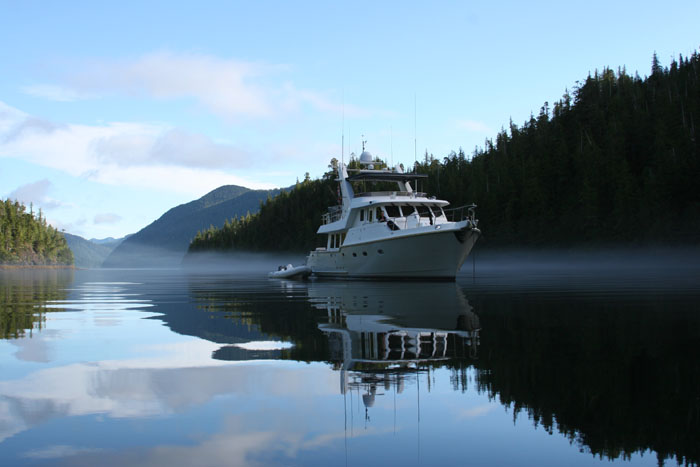 (click
on any small piture to make it big)
(click
on any small piture to make it big)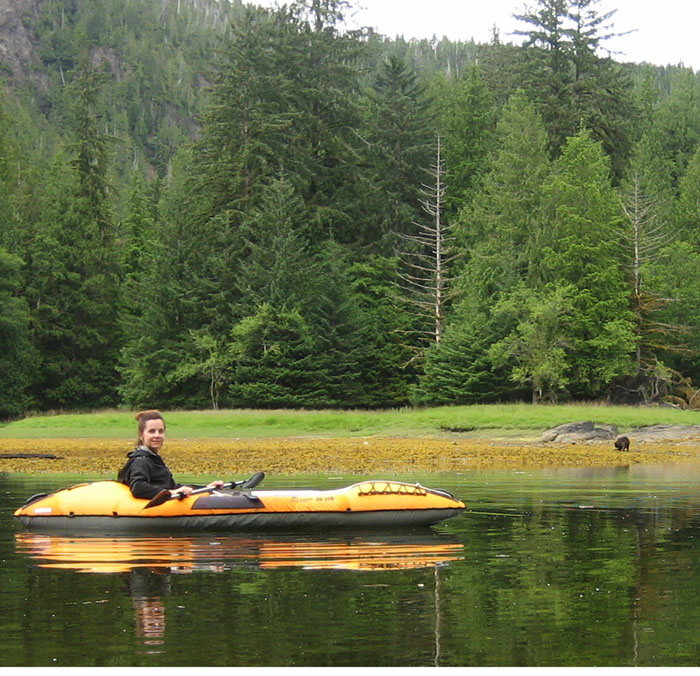 QUEEN
CHARLOTTE BLACK BEAR
QUEEN
CHARLOTTE BLACK BEAR
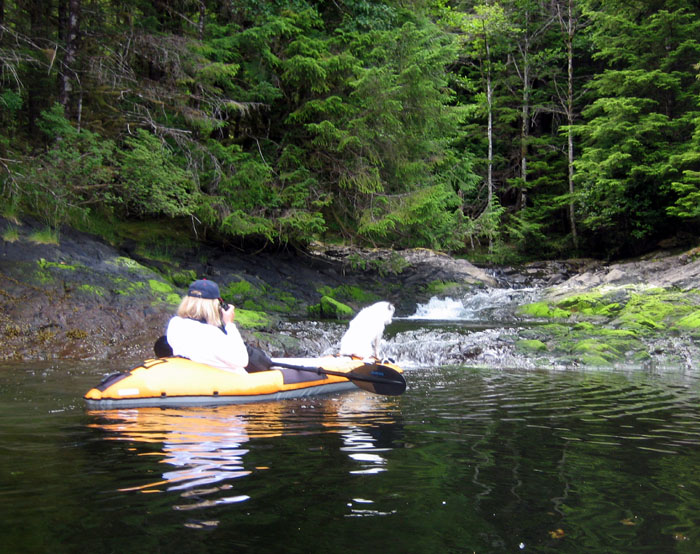 There
are also two streams that empty into the cove. One is flat and meanders
back behind the old homestead site and the other is more powerful as it
rushes and tumbles over boulders spilling out into the peaceful flat water
of the cove. You can hear the source of the stream, a powerful waterfall,
hidden nearby within the forest. Fran and Joe were told later by the bush
pilot that picked them up at Rose Harbor that it’s one of his favorite
places on the island. He said there is a beautiful walk back into the
forest alongside the stream and the forest is filled with wild berry
bushes. I’m sure the bears must really like foraging for berries there.
We were content though to watch nearby in the safety of our kayaks.
There
are also two streams that empty into the cove. One is flat and meanders
back behind the old homestead site and the other is more powerful as it
rushes and tumbles over boulders spilling out into the peaceful flat water
of the cove. You can hear the source of the stream, a powerful waterfall,
hidden nearby within the forest. Fran and Joe were told later by the bush
pilot that picked them up at Rose Harbor that it’s one of his favorite
places on the island. He said there is a beautiful walk back into the
forest alongside the stream and the forest is filled with wild berry
bushes. I’m sure the bears must really like foraging for berries there.
We were content though to watch nearby in the safety of our kayaks. 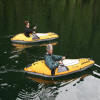
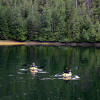
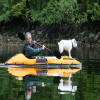
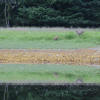
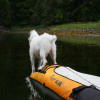
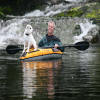
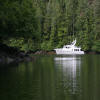
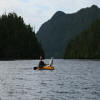
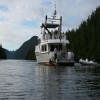
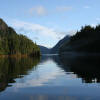
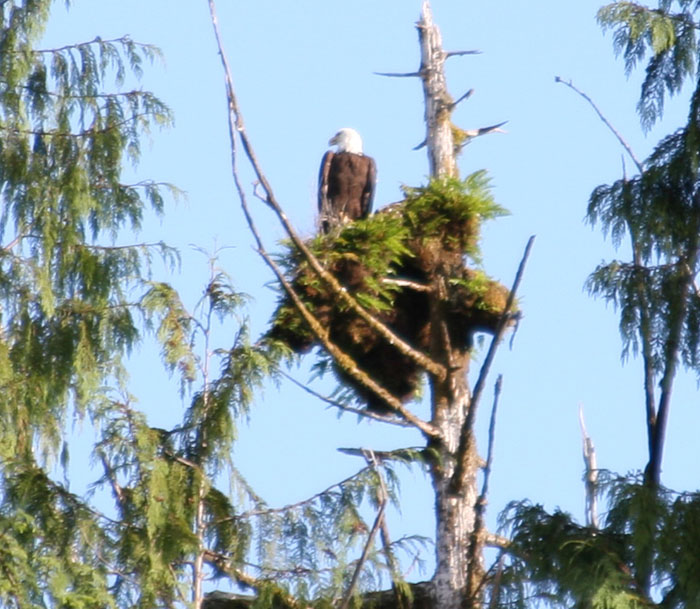 EAGLES
EAGLES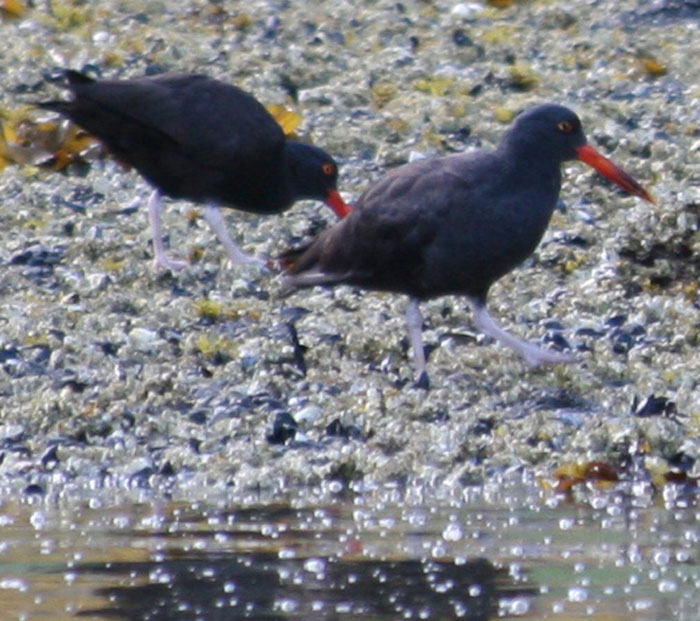 OYSTER
CATCHERS
OYSTER
CATCHERS
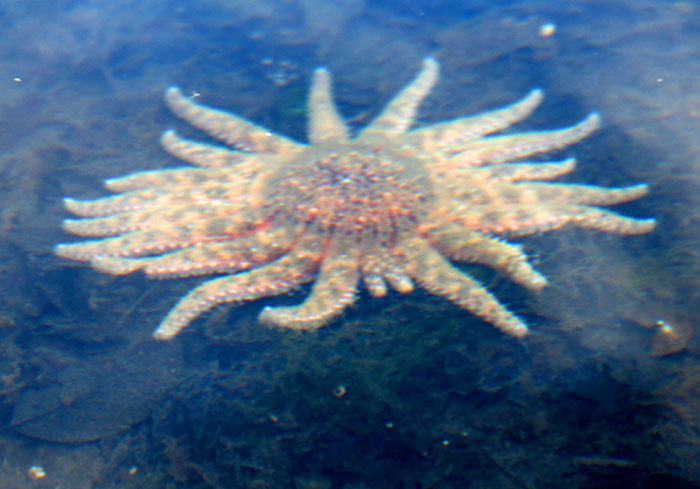 STARFISH
AND SUN FISH
STARFISH
AND SUN FISH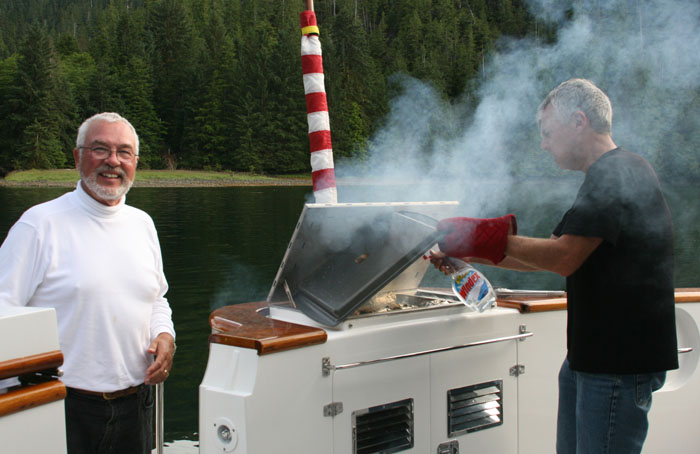 QUEEN
CHARLOTTE SALMON
QUEEN
CHARLOTTE SALMON

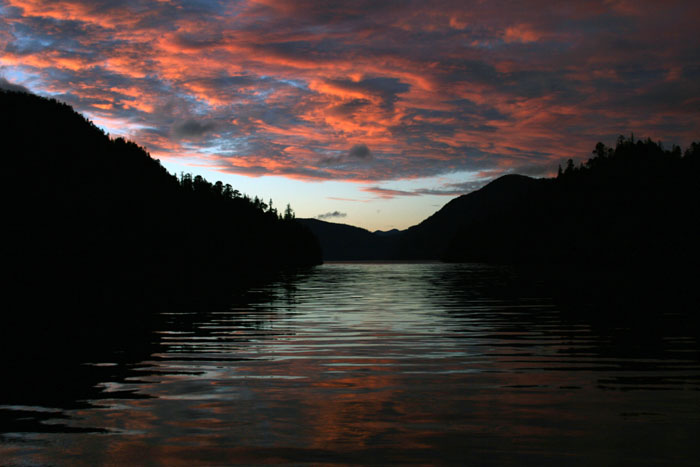 I’d
hate to think that the bear we got to know, the eagles, the little
prankster curious otters, and the regular feeding grounds for the birds
could so easily and thoughtlessly lose their environment, be so easily
irradicated it makes me sick. I’m so glad that they are protected here
now as they all should be.
I’d
hate to think that the bear we got to know, the eagles, the little
prankster curious otters, and the regular feeding grounds for the birds
could so easily and thoughtlessly lose their environment, be so easily
irradicated it makes me sick. I’m so glad that they are protected here
now as they all should be. 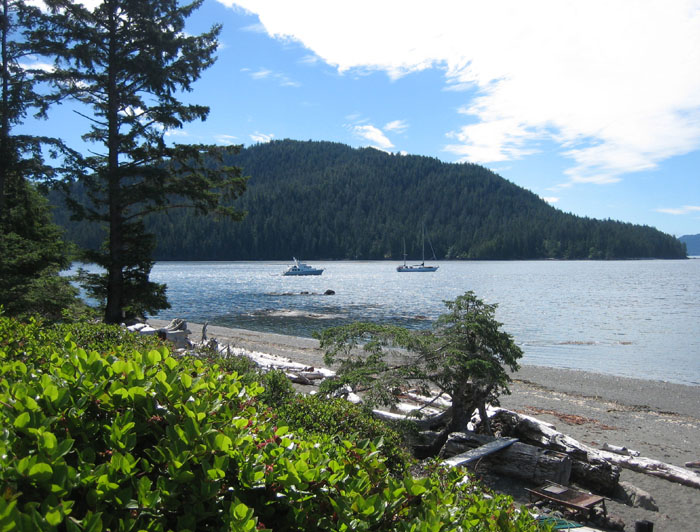
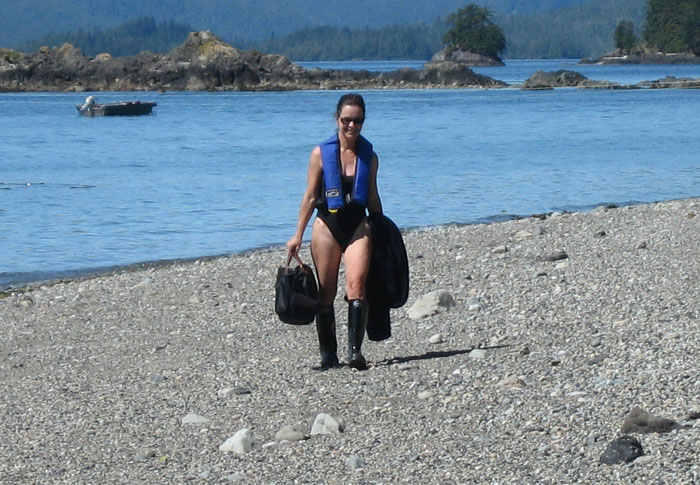 We
felt silly in our outfits as we prepared to go ashore. We put on swim
suits and outer clothing, life vests, and of course our big black rubber
boots to enable us to get off the dinghy at shore. There are no docks so
you must be able to come in by your own means and beach your dinghy to get
to shore. So knee high boots are the answer to that problem if you want
to keep your feet dry. Once in shallow water, the person on the bow jumps
off and pulls the dinghy in and then we all get off. Again, we’ve got two
way radios in hand to call Larry or vice versa when it’s time to leave.
We watch as Ziggy and Larry speed off back to the boat.
We
felt silly in our outfits as we prepared to go ashore. We put on swim
suits and outer clothing, life vests, and of course our big black rubber
boots to enable us to get off the dinghy at shore. There are no docks so
you must be able to come in by your own means and beach your dinghy to get
to shore. So knee high boots are the answer to that problem if you want
to keep your feet dry. Once in shallow water, the person on the bow jumps
off and pulls the dinghy in and then we all get off. Again, we’ve got two
way radios in hand to call Larry or vice versa when it’s time to leave.
We watch as Ziggy and Larry speed off back to the boat. 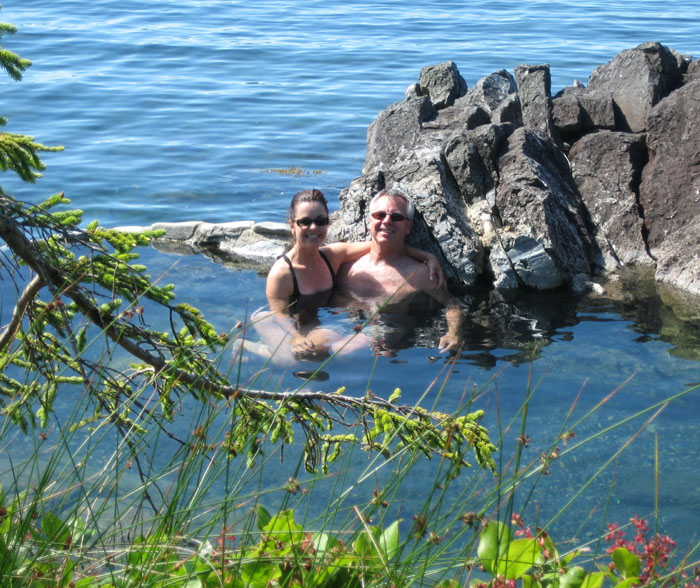

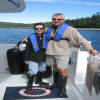

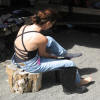
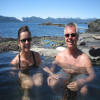
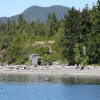
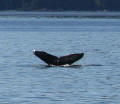
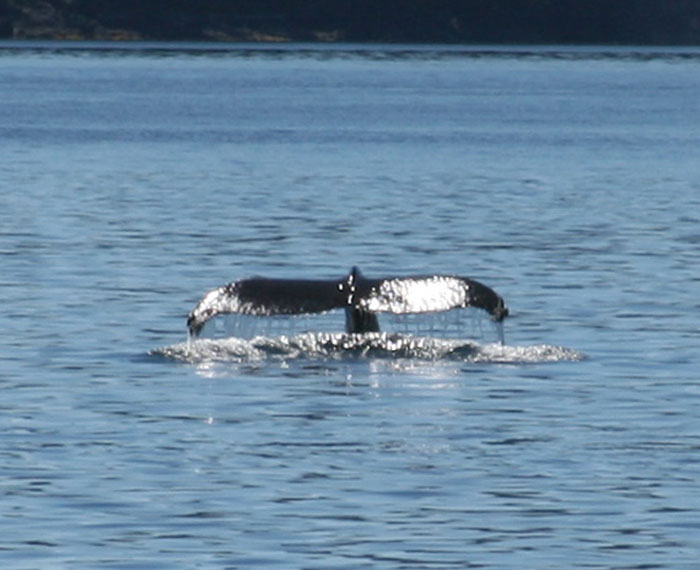 The
first sign was their spout and then we were surprised to see more and
more. There was a group of whales. Some were breaching and others just
coming up for air and diving back down again for another 5-8 minutes while
they stuffed their tummies with krill. Then we’d notice spouts on the
portside and well actually they were spouting in all directions. Finally
we just had to say goodbye and head on our way leaving them to their
work. To see so many in one spot in one area was quite incredible.
The
first sign was their spout and then we were surprised to see more and
more. There was a group of whales. Some were breaching and others just
coming up for air and diving back down again for another 5-8 minutes while
they stuffed their tummies with krill. Then we’d notice spouts on the
portside and well actually they were spouting in all directions. Finally
we just had to say goodbye and head on our way leaving them to their
work. To see so many in one spot in one area was quite incredible.

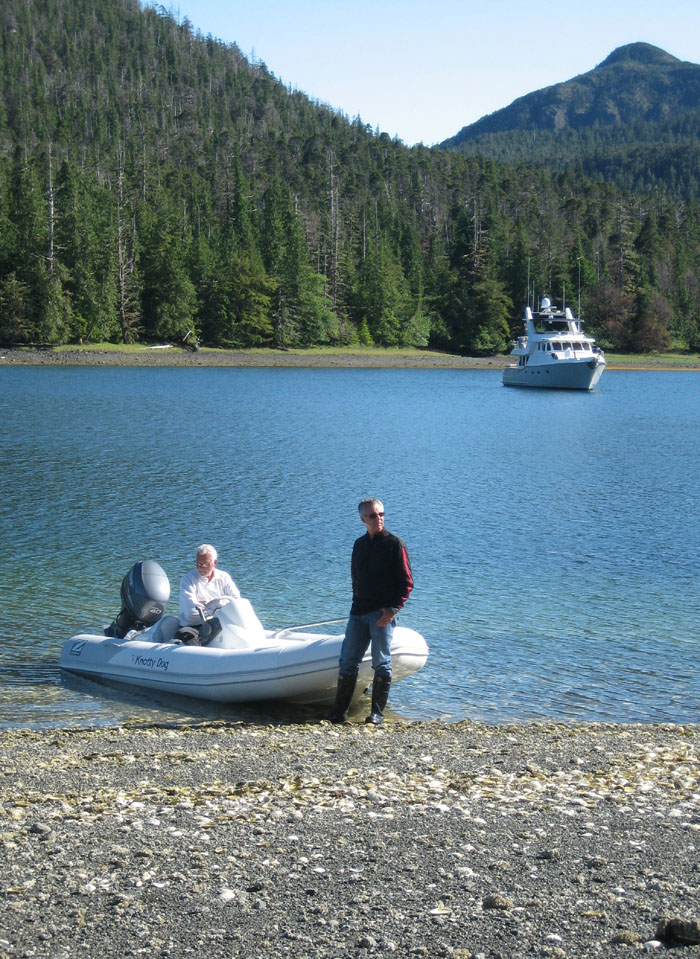 BAG
HARBOUR
BAG
HARBOUR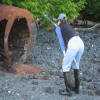
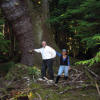
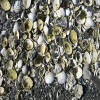
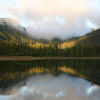
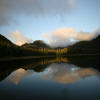
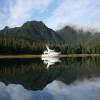
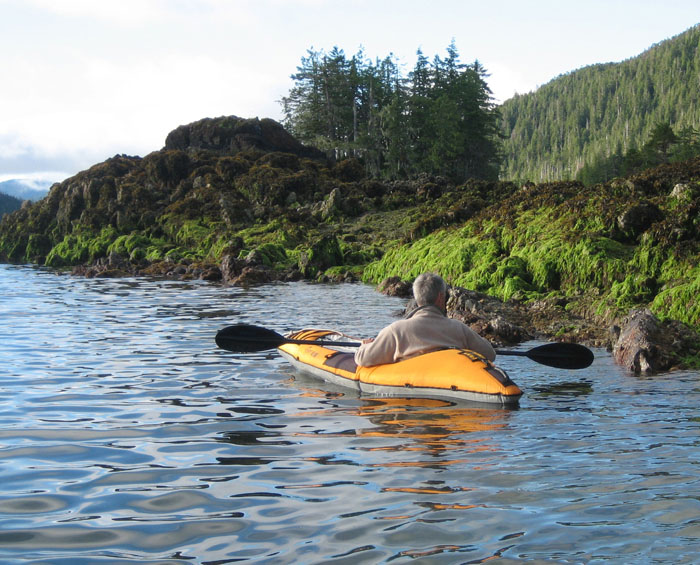
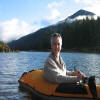
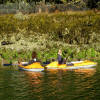
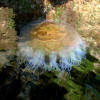
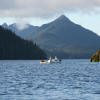
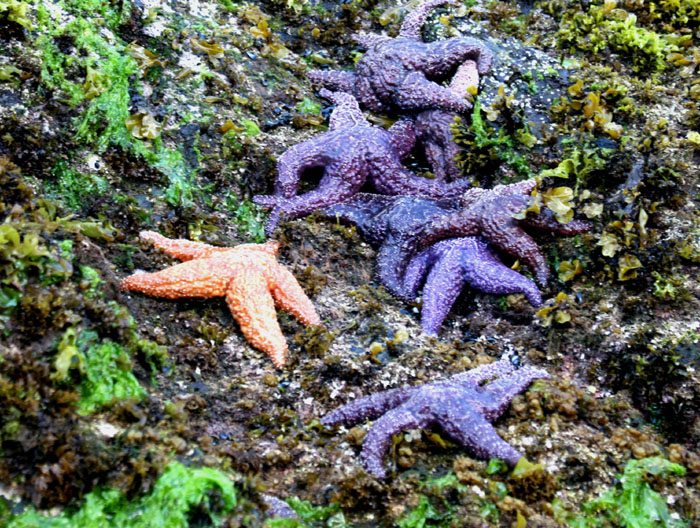 Larry
dropped me off. It was cold out, as the sun hadn’t had a chance to warm
things up. I headed into Burnaby Narrows which by boat is a narrow
passage between Burnaby Island and Moresby Island. By kayak it’s not so
small but the thing that makes this place special is the tidal rush that
goes through here washing nutrients, clean and plentiful that all sorts of
wildlife and sea life feed off of. The exposed shore and floor bottom
beneath is a palette of multi colored sea life, including star fish of
all colors, sizes and shapes, so many that they are piled on top of each
other. There are bat starfish, purple and orange and grey. There are
shells with large hermit crabs inside just so many that they cover the
rocky shore line. There are Dungeness crabs and abalone. There are all
sorts of sea anemones with long spikes in purples and blacks, reds,
oranges, and amazing waving sea weed looking like multi colored huge
potato chips. It was a sight to see. I was lucky to get there early for
the shore period of slack tide which made the kayaking easy but once the
tide changed the forceful water that squeezes through the narrow pass
gains strength and force and soon decides where you are going and you just
begin to swirl with it. Fran and Joe arrived and I traded places and got
on the dinghy with Larry and Ziggy. We floated with the current and
watched the beauty of it all as we went where the current took us.
Larry
dropped me off. It was cold out, as the sun hadn’t had a chance to warm
things up. I headed into Burnaby Narrows which by boat is a narrow
passage between Burnaby Island and Moresby Island. By kayak it’s not so
small but the thing that makes this place special is the tidal rush that
goes through here washing nutrients, clean and plentiful that all sorts of
wildlife and sea life feed off of. The exposed shore and floor bottom
beneath is a palette of multi colored sea life, including star fish of
all colors, sizes and shapes, so many that they are piled on top of each
other. There are bat starfish, purple and orange and grey. There are
shells with large hermit crabs inside just so many that they cover the
rocky shore line. There are Dungeness crabs and abalone. There are all
sorts of sea anemones with long spikes in purples and blacks, reds,
oranges, and amazing waving sea weed looking like multi colored huge
potato chips. It was a sight to see. I was lucky to get there early for
the shore period of slack tide which made the kayaking easy but once the
tide changed the forceful water that squeezes through the narrow pass
gains strength and force and soon decides where you are going and you just
begin to swirl with it. Fran and Joe arrived and I traded places and got
on the dinghy with Larry and Ziggy. We floated with the current and
watched the beauty of it all as we went where the current took us.
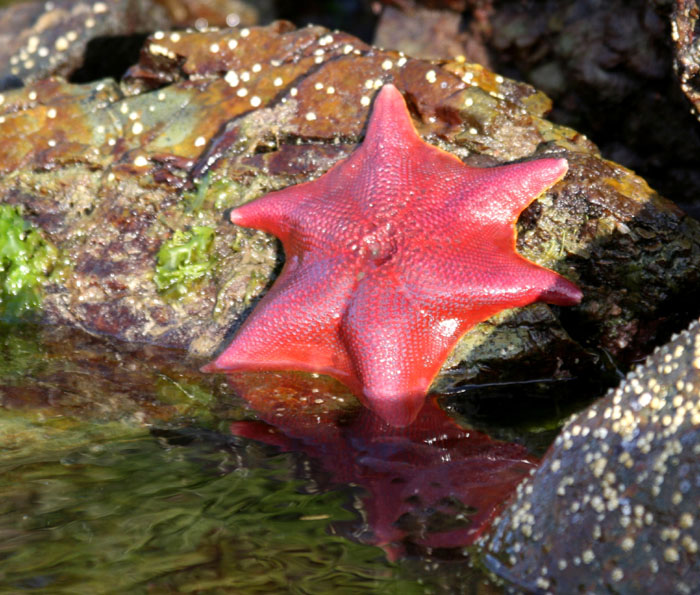
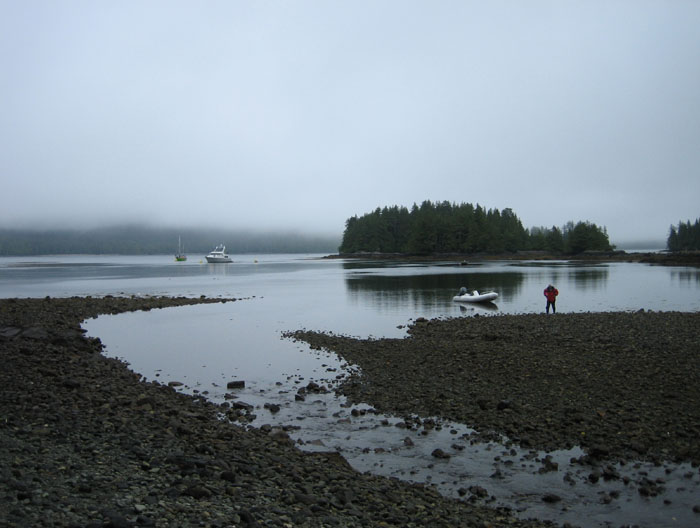 ROSE
HARBOR
ROSE
HARBOR
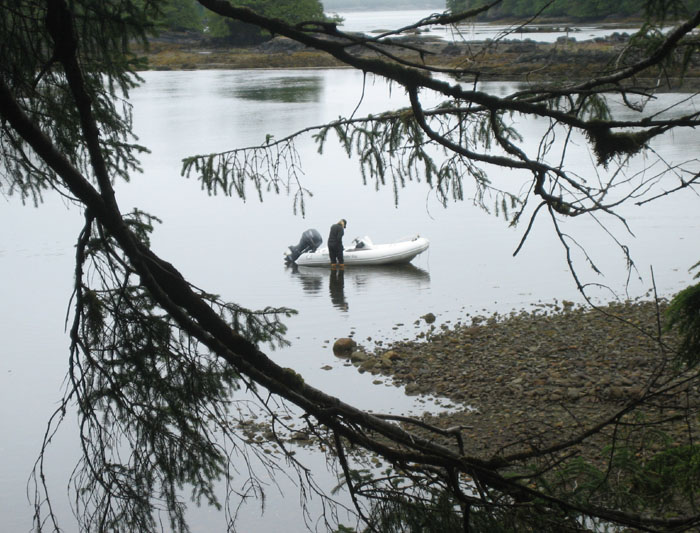 There
are only three structures here in Rose Harbor and this by the way is the
only private land in the park now. There’s non stop discussion about
controversy over this private land as the Park Service thinks it should be
all park land but as we spend the next couple days here, it would be hard
to think of these private owners being gone. They are such an integral
part of the experience here. It’s like a remote out post and after this
isolated journey down to the end of the islands, to the southern tip, it
is a welcome sight to know these few settlers are here. It’s a place
where bush pilots can fly into depending on the weather, bringing visitors
to see Ninstints, the UNESCO Heritage site that we came all this way to
see. It’s a place where the kayakers can come to for help and protection
and a place to wait for pick up. Like I said, it’s an out post.
There
are only three structures here in Rose Harbor and this by the way is the
only private land in the park now. There’s non stop discussion about
controversy over this private land as the Park Service thinks it should be
all park land but as we spend the next couple days here, it would be hard
to think of these private owners being gone. They are such an integral
part of the experience here. It’s like a remote out post and after this
isolated journey down to the end of the islands, to the southern tip, it
is a welcome sight to know these few settlers are here. It’s a place
where bush pilots can fly into depending on the weather, bringing visitors
to see Ninstints, the UNESCO Heritage site that we came all this way to
see. It’s a place where the kayakers can come to for help and protection
and a place to wait for pick up. Like I said, it’s an out post. 